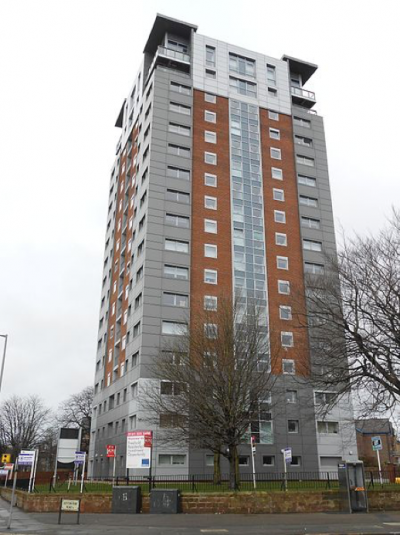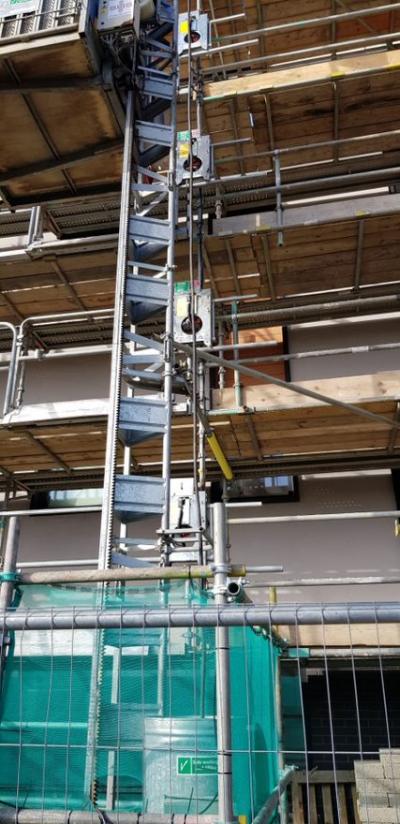RTB Leaseholders in Local Authority Blocks: when can they be charged for fire safety remediation?
This post looks at whether the costs of fixing and making safe local authority blocks can be recovered from leaseholders. The things that need fixing can include replacement cladding; fixing fire breaks; replacing fire doors etc but there may also be additional services, such as the provision of a waking watch. Sometimes the landlord may need to enter flats to look at what needs doing, and may wish to make alterations inside individual flats; this raises other questions, not discussed here, including, first, whether the landlord has a right to go into the flat, and secondly, whether the landlord has the power to make alterations.
Posted:
Time to read:
The situation for leaseholders in local authority blocks differs from the private sector because the leases will have been sold under the ‘Right to Buy’. The terms of these leases are shaped by statutory provisions in Schedule 6 of the Housing Act 1985 (amended by the Housing and Planning Act 1986, that came into force in January 1987). For leases entered between 3 October 1980 and 1 April 1986 the operative Act was the Housing Act 1980 (and the wording of RTB leases entered during that period may differ somewhat).

Whether the costs can be passed on will depend on the lease wording, but some general propositions for RTB leases follow (para references are to Sch 6).
- The lease may include reasonable covenants and conditions (para 5).
- The landlord is under an implied covenant to keep in repair the structure and exterior of the dwelling-house and of the building in which it is situated and to make good any defect affecting that structure (para 14(2)(a)). Usually there will be an express covenant in the lease to this effect.
- The landlord may (depending on the lease wording):
- require the tenant to pay a reasonable part of the costs of repairs and services (para 16A(1)(a)).
- require the tenant to pay a reasonable part of the costs of making good structural defects, except that during the first 5 years of the lease the amount is limited to the estimate contained in the s125 notice (para 16A(1)(a); 16(B)). This is the notice given to the person buying the RTB lease and includes the estimated service charges for the next five years.
- require the tenant to pay improvement contributions, except that during the first 5 years of the lease the amount is limited to the estimate in the s125 notice (para 16A(1)(a); 16(C)). Not all RTB leases allow recovery for improvements, which may be important when it comes to recovery of fire safety costs.
- Costs can only be recovered if they are reasonable. By s19 of the Landlord and Tenant Act 1985 costs are recoverable only to the extent that they are ‘reasonably incurred’ and for works/services of a ‘reasonable standard’. This applies to all of the items covered by the service charges and although the section talks of ‘reasonably incurred’ it is not only about whether it was reasonable to spend money at all but also whether the amount itself is reasonable. These provisions, together with consultation provisions in s20 of the Landlord and Tenant Act 1985, are designed to ensure that leaseholders ‘are not required … to pay more than they should for services which are necessary and are provided to an acceptable standard.’ (Daejan Investments Limited).
In sum, these provisions meant that, always subject to the wording of the particular lease, the landlord may be able to recover the reasonable costs of repair, making good structural defects, and (less standardly) improvements.
This leads on to the question then of what the distinction is between repair, improvements, and making good structural defects. This is seldom straightforward. Applying the broad principles to particular buildings will always be fact-sensitive.
Repair: repair is to do with fixing something if it goes wrong; there is an idea that at some time in the past the premises were in a better state of repair and that they have since deteriorated: ‘It will only be in a state of disrepair if one can point to a previous time at which the [subject matter of the covenant]… was in a better condition so that one can say there has been deterioration.’ (Janet Reger International Ltd v Tiree Ltd [61])

Structural defects: there is a lot of case law discussing a distinction between ‘repair’ and ‘inherent defects’ (not ‘structural defects’). Inherent defects are to do with ‘defective design’ (Quick v Taff Ely BC). A recent Upper Tribunal case, City of London v Various Leaseholders of Great Arthur House (discussed by NearlyLegal) discusses the distinction between repair, inherent defect and structural defect, noting that there is no ‘bright line that can be drawn as a matter of principle’. A structural defect is not confined to a ‘so-called inherent defect’ but ‘must be something that arises from the design or construction (or possibly modification) of the structure of the Building. It is to be contrasted with damage or deterioration that has occurred over time, or as a result of some supervening event, where what is being remedied is the damage or deterioration. That is repair.’ [para 40]
Improvements: An obvious improvement would involve putting something in that was not there before. For example, retrofitting sprinklers where there were none previously. Tricky issues arise when something that was ‘tired’ or needed some fixing, is remedied by providing a newer, more modern version of that thing. So, for example, Minja Properties Ltd v Cussins Property Group plc (1998) involved a commercial lease in which the landlord had responsibility to ‘maintain and keep in good and tenantable repair, inter alia, the window frames’. The steel window frames suffered from corrosion and the landlord wanted to replace them with double-glazed aluminium frames. Two tenants objected as their leases were running out fairly soon and, as they had no intention of staying, they did not want to pay for this. Harman J accepted that repair could involve more than ‘patching up’ and, in this particular case, as the additional cost caused by the double glazing was ‘a very small percentage of the total cost’, a ‘comparatively trivial amount’, it was held to come within the covenant to repair and not amount to renewal.
What does this mean for paying for fire safety measures?
There will be lots of fuzzy boundaries that depend on the particular facts, and the wording of leases.
Leases are likely to include various generally worded provisions that may cover waking watch costs and some fire safety measures. For example, clauses to enable the landlord to charge for any services or facilities provided by the Council; or to recover the costs of complying with any notices served by competent authorities (such as the Fire and Rescue Service); and also, as it may be a condition of insurance that a waking watch is provided, the waking watch costs could form part of the cost of procuring insurance. The costs of the waking watch is therefore likely to be recoverable if ‘reasonable’.
Most fire safety ‘works’ are unlikely to involve ‘repair’, as it is unlikely that the item has been damaged or deteriorated.
Some measures will clearly involve improvements, that is, introducing new measures, such as fire alarms or sprinklers, that were not previously there. Others may be ‘structural defects’. So, for example, cladding that is not safe is surely a ‘defect’ that arises from the design or construction or -most likely – modification of the building. Some of these cladding costs, where they involve replacement of ACM cladding are likely to be recovered by the landlord from the government’s remediation fund; and leases should be interpreted so that double-recovery is not possible (Sheffield CC v Oliver). What about a missing fire break? Is that a structural defect or is it corrected by making an improvement? The distinction will matter if the lease permits recovery of costs for structural defects but not for improvements (in other research I found that only 1/3 of social housing providers - housing associations as well as local authority landlords - said that all of their leases allowed them to reclaim the costs of building improvements). But, for both, for the first 5 years of a lease recovery for structural defects and improvements is capped by the s125 estimate (which is unlikely to include these items given the unanticipated need for most fire safety measures).
What if the landlord is pursuing a claim against a third party eg an insurance company or developer? It may be the landlord would be required to give credit for the anticipated income (Avon Ground Rents v Cowley).
None of this is straightforward. There can be some fine distinctions drawn, but certainly for RTB leases that have been owned for more than 5 years many of the fire safety costs are likely, in principle, to be recoverable. But as lawyers always say: it does depend on the lease wording.
__________
How to cite this blog post (Harvard style)
Bright, S. (2019). RTB Leaseholders in Local Authority Blocks: when can they be charged for fire safety remediation? Available at: https://www.law.ox.ac.uk/housing-after-grenfell/blog/2019/12/rtb-leaseholders-local-authority-blocks-when-can-they-be-charged (Accessed [date])
Share:
